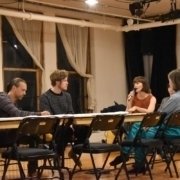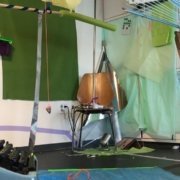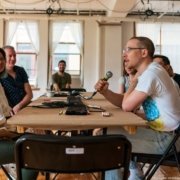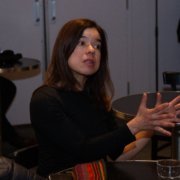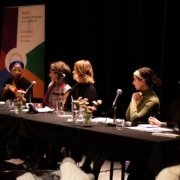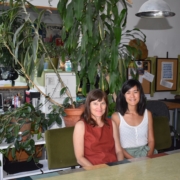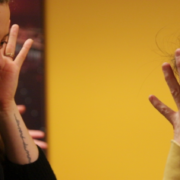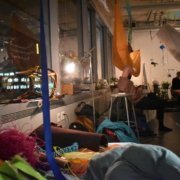Everything is Work: Summary on Performative Discussion about “burnout”
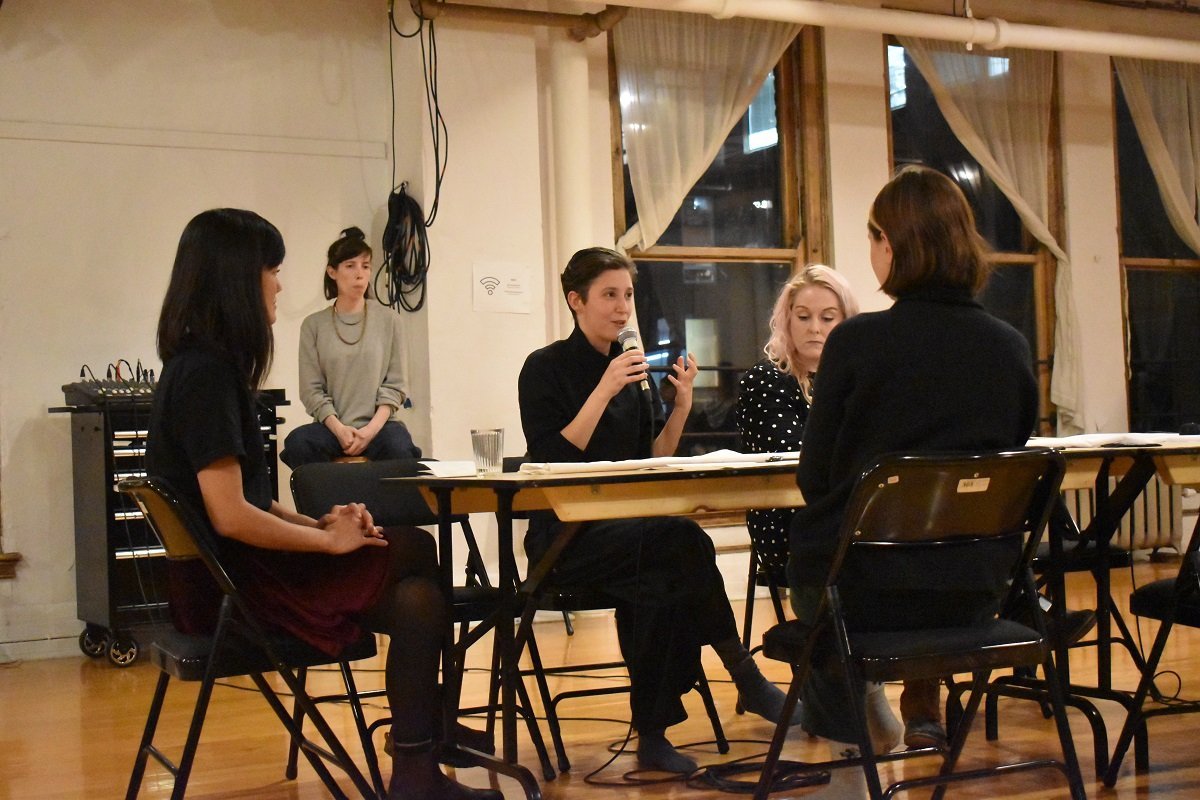
Photos by Lital Khaikin.
On Friday, November 15, we held the first event in our Creative Resilience: Exploring Arts & Health mini-series at Studio 303. The Performative Discussion on burnout drew a crowd of 35-40 people, with a steady flow around the table. Next week, we will share some tips and solutions that were offered in the Performative Discussion. For now, here is what we heard from participants about burnout in the arts:
Performative Discussion
The performative discussion format—proposed by Studio 303 and based on Lois Weaver’s Long Table—provided both an opportunity and a challenge. The discussion brought artists together into a free and open, bilingual conversation about the stigmas and importance of acknowledging burnout in the arts. But it also challenged us in a social negotiation with the ‘informal formality’ of the discussion. Participants noted how the space had a feeling of warmth and hospitality, yet it was also, in its own way, work.
Burnout is a symptom of working and social conditions that, over time, take a toll on emotional and physical health. But talking about burnout in working environments still comes with its own stigma. Sometimes it’s necessary for artists to take a step back in order to balance workload, focus on other areas of life, relieve stress, or just take a break from constantly producing. Yet, the artist who says no is also at risk of retaliation and losing opportunities, even when they ask for help. As one participant put it, asserting personal boundaries can result in “a contamination in the network”.

A Product of Capitalism
One of the experiences that shaped the idea of the Creative Resilience series was that conditions of precarious labour, gig economies, and low (or no) pay, force artists into an ever-greater dependency on subsidies and the commodification of art. We heard from participants that a majority of working artists identify as freelancers, with only a minority working on payrolls for established organizations. We also heard that there are still social stigmas around identifying as a freelancing, full-time, or part-time artist. As one participant said, “We don’t talk about our day jobs.”
Whether or not artwork is a primary source of income, artists are under enormous pressure to support themselves and pay rent through means that are increasingly unstable and inequitable. There was a resonating agreement that burnout is a product of capitalism, and that real solutions need to come out of fundamental, structural changes. Capitalist logic turns everything into a revenue stream, extracting value not only from the artwork as a ‘product’, but also from the artist’s process, identity and social networks. This emotional and social capital is extracted like any other resource, with little regard for the lasting impacts.

What is Considered Work?
We also heard that despite the commodification of art for markets, the process of creating art is not treated as work, and that the labour and energy it takes to create art are often not remunerated. Much like housework, this creative labour is often invisible, unpaid and unprotected by labour laws. Performing artist participants discussed how unpaid labour that contributes to burnout includes the processes of looking for work, such as auditions, making videos for portfolios, and the documentation of performances.
We heard from participants that the gig economy, and increasingly disengaged promoters or publishing platforms, force new expectations onto artists. Artists who are being presented or published are expected to run their own marketing campaigns, make videos, and carry much of the burden of promotional labour. Several participants discussed how social media, despite being an important promotional and job seeking tool for artists, is another form of unremunerated digital labour. This raised questions around the ethics of social media as a central place for sharing information and finding work. As a few participants noted, if you don’t provide content through social media, people quickly forget about you.
The Work of Participation
We heard from participants that the flexible nature of artistic and cultural work often means working around a 24 hour clock. Every aspect of professional and personal life becomes something to commodify or catalyze into a source of income. The grey area between community and industry in the arts also enforces competition between friends. One participant observed, “Our community isn’t really a community… it’s an industry.”
The isolated nature of artistic work was also brought up. The nature of this work means there is already little time or opportunity to nurture inspiration by sharing ideas and community with other artists. And yet, when dealing with burnout, participation in community and creative activities tends to be the first thing to go, sometimes at the cost of entirely losing a creative or social network. Where do we find inspiration then?
Outside of their own practice, artists have the additional pressure of participating in events in the broader community. Is part of being in the community, participants asked, going to every show, supporting every organization and going to every workshop? And just how much is too much? This form of interplay and exchange can also be an extractive form of labour and contributes to the load of burnout. Yet, in order to stay relevant and remain in a community, artists have to constantly come up with the creative energy to participate and reciprocate in their communities. So where is the middle ground? Where are the spaces where art is just art? How do we create those spaces?

